Missed opportunity? Video called How Vancouver’s Waterfront Became So Boring sparks debate over one of the ‘most celebrated waterfronts in the world’
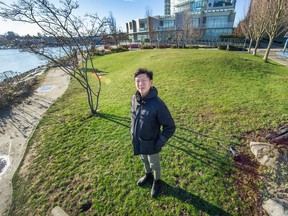
Article content
When you name your YouTube seawall video How Vancouver’s Waterfront Became So Boring, subtlety is not your aim.
Even so, Uytae Lee‘s 11-minute mini doc about one of the city’s world-famous gems got under a lot more people’s skin than the urban-planning filmmaker anticipated.
Article content
“It definitely generated a lot of controversy, at least in some circles,” Lee said. “I’m friends with quite a few urban planners in the city and I think there were definitely some feathers ruffled.”
If nothing else, his video has helped spark a conversation.
The short film, posted in mid-February, has garnered more than 120,000 views and more than 750 comments.
Advertisement 2
Article content
Lee, who graduated from Dalhousie University in Halifax with a bachelor degree in community design and urban/regional planning, was inspired to make it after watching a debate last April sponsored by Urbanarium, a non-profit platform for community planning and design discussions that partnered with Lee to make the video, and UBC’s School of Architecture and Landscape Architecture.
The event was titled City Debate #13: Commercialize the Seawall.
A poll prior to the four speakers taking the podium — two of them yay, two of them nay — showed 73 per cent against the idea of more commercialization along the seawall, which runs uninterrupted from the convention centre downtown to Spanish Banks in Point Grey.
After the four speakers were done, another poll was done of the 50 or so people in attendance at Robson Square and another 400 or so viewing online, and the results had inched more toward commercialization: 61 per cent con, 39 per cent pro.
Advertisement 3
Article content
“There’s so much potential there for people to come down other than just walking or riding a bike,” Lee said. “That’s what struck a chord with me.”
Lee’s video contrasts the seawall, which he admits is perhaps one of the “most celebrated waterfronts in the world,” with attractions in other waterfront cities: Harbourfront in Halifax; Porto’s restaurants in Portugal; Hat Yai’s floating markets in Thailand; Oslo’s Harbour Promenade in Norway; Coney Island’s amusement park, New York.
“I see all these unused spaces in some of the most prime real estate in Vancouver. I can’t help but think there’s a missed opportunity here,” Lee said. “Other cities’ waterfronts make Vancouver’s look like a snooze-fest.”

The seawall, at 28 kilometres, is the world’s longest uninterrupted waterfront path, according to the City of Vancouver, passing beside more than 20 parks and a dozen or so restaurants.
Article content
Advertisement 4
Article content
“But not much else,” Lee said. “A lot of it, frankly, is underused.”
Case in point, he said, is Cultural Harmony Grove under the south end of the Burrard Bridge.
“A patch of grass with trees and a few benches. I guess one way to create harmony is to make a park so boring everyone agrees not to use it.”
Then there’s the unlikely named Existential Alley, next to the David Lam dock at Homer Mews.
“I think the name speaks for itself,” Lee said.
These are just two of numerous examples of boring public spaces, he said, and that includes the seawall.
And to really see the difference between the Halifax waterfront, say, and Vancouver’s seawall, wait until the sun goes down, Lee said. After dark, Halifax’s boardwalk still bustles while the seawall after dark is “basically shut down,” he said.
Advertisement 5
Article content
“It’s like the city doesn’t want anybody to be out here after sunset. There’s no lighting, very few people, it’s a no-man’s land.”
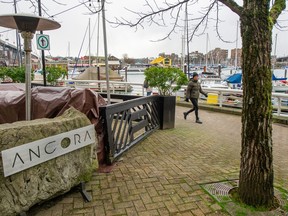
Which raises the question: Why?
NIMBYism jumps to mind.
A popular restaurant at Kits Beach next to the tennis courts had to surmount local outrage, a proposed beach volleyball court at Sunset Beach was rejected in part because West End neighbours complained it would create dust.
In 2001, when Coal Harbour was being developed, the B.C. Restaurant and Foodservices Association proposed turning it into a “mecca for fun and food,” but the city council of the day kiboshed the idea because neighbours protested.
The next year the park board proposed developing what became the Boathouse: “The result? Raucous public meetings,” Lee said. “There’s a long history of people opposing all sorts of activity on the seawall.”
Advertisement 6
Article content
Even bikes were not always welcome. In the 1970s, cycling was illegal and the Vancouver Sun noted that police would “perch at various key locations along the seawall, nab cyclists and write $100 tickets, about 3,000 in total by 1976.”
Not to be outdone, Vancouver Sun columnist Allan Fotheringham wrote that widening the seawall was a “genuinely idiotic” plan “to accommodate goofy cyclists to bash into all the peaceful pensioners and sane pedestrians who enjoy a quiet stroll.”
One park board commissioner went so far as to suggest ticketing joggers.
Even today it’s hard to get a daycare installed at Coal Harbour without neighbours complaining about the potentially ear-splitting noise coming from pre-schoolers.
Advertisement 7
Article content
The hundreds of comments viewers of Lee’s video made included those opposed to change and those in favour of it:
• “Vancouver’s Park Board: No restaurants on the waterfront, they destroy nature and beaches. Also Vancouver’s Park Board: No cycling roads in Stanley Park, they destroy car traffic to restaurants.”
• “I like it without so many restaurants and invasive commercialism. I love running on it and getting a nature tour at the same time.”
• “The simple answer is that the entire waterfront is geared toward rich residents who do not want to see non-residents outside the window of their multi-million-dollar condos.”
But it’s more than NIMBYs at work, Lee said. There is a pervasive ideology at play, as well.
“It turns out there are a lot of park planners and policy-makers who actually want public spaces without much else to do other than walking,” he said.
Advertisement 8
Article content
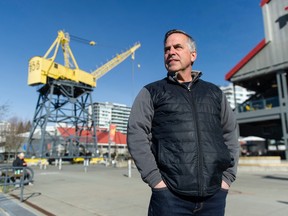
The City of North Vancouver has revitalized its waterfront with the Shipyards District and Spirit Trail. That was a different beast than the seawall — the old shipyards was a collection of derelict industrial buildings — but there were residents against development, specifically the high-rises that helped pay for the project, which sports the Polygon Gallery, restaurants, shops, hotels, night markets and a skating rink.
Spirit Trail, meanwhile, links Park and Tilford Gardens in North Van to Ambleside in West Vancouver, but the plan is to eventually have a 35-kilometre greenway from Deep Cove to Horseshoe Bay.
“There was opposition, and looking back it might have seemed the end of the world, but it wasn’t insurmountable,” said Darrell Mussatto, the former mayor who was instrumental in shepherding the project.
Advertisement 9
Article content
“Change is hard,” Mussatto said. “You have to listen to concerns, you have to empathize with the neighbours, for sure.
“And you have to agree to disagree, but you have to understand where they’re coming from and, you know, I find that more people come over to your side when you do that.”
Across Burrard Inlet, Vancouver’s seawall falls under two jurisdictions, the city and the park board, and earlier this year the board lifted a moratorium on new commercial initiatives in the city’s parks, directing staff to prioritize a “Think Big” revenue-generating strategy.
“This strategy may lead to recommendations to the board to explore opportunities along the seawall for increased commercial operations, attractions or other installations, but at this stage it’s too early to speculate on what this might look like,” David Harrison, a park board spokesman, said by email.
Advertisement 10
Article content
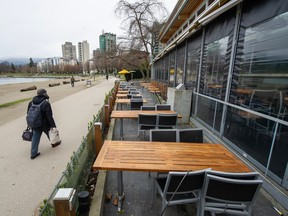
Marie-Claire Howard, a park board commissioner, said in an email that the goal is to have public/private partnerships “enhance people’s experience in our parks and beaches, generate the revenues we need to maintain our facilities and adapt them to increased density.”
Later this year, the park board and the city will ask the public for input as to how to shape the future of parks and beaches around the areas that make up the West End waterfront.
And the city has launched the Sea2City Design Challenge, an exercise in rethinking the False Creek shoreline, which includes design input from Musqueam, Squamish and Tsleil-Wauthuth on how the shoreline can adapt to rising sea levels, urban development and ecological revitalization.
Advertisement 11
Article content
Which raises a point.
“The water’s edge is something that defines Vancouver and the seawall … (but) it’s all built, it’s man-made, it’s all colonial,” said Margot Long, a landscape architect and one of the two voices who debated against the seawall’s commercialization last spring.
Recognizing that, she said she thinks of the seawall like a necklace, one not just strung with pearls or diamonds.
“With a bunch of different kinds of jewels on it,” Long said. “Each one is uniquely different.
“I think that’s what Vancouver is all about, its uniqueness. It doesn’t need to be like all the other waterfronts that have massive amounts of excitement. In the summer our waterfront is already amazingly active, there are hundreds and hundreds of thousands of people on it.
Advertisement 12
Article content
“It is not boring. Why does commercialization make it better?”
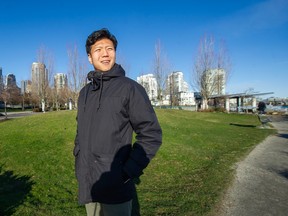
Lee’s video has been criticized as being one-sided.
“We love our debates because they do such a great job of presenting both sides and that aim to be provocative and get people engaged,” Amy Nugent, executive director at Urbanarium, said.
“Some of the criticism (of the video) is we didn’t acknowledge the big undertaking and the success of the seawall in securing it from private development,” Nugent said. “And blaming it on NIMBYism is a bit too simple and divisive, and I get that.
“You use that simple trope of NIMBYism and you sometimes miss an opportunity to unpack the deep-rooted West Coast cultural underpinnings of a desire to connect our water with a walking path, nature, an ecological orientation.”
Advertisement 13
Article content
At the end of the day, engagement from both sides can only enrich the debate on what is a divisive issue, she said.
“We’re talking about things like how did it get to be this way? And what are the demands of this particular cultural moment?
“In city-making, there’s always got to be some compromise.”
More news, fewer ads: Our in-depth journalism is possible thanks to the support of our subscribers. For just $3.50 per week, you can get unlimited, ad-lite access to The Vancouver Sun, The Province, National Post and 13 other Canadian news sites. Support us by subscribing today: The Vancouver Sun | The Province.
Vancouver’s seawall: A walking/cycling path or could it be so much more? - Vancouver Sun
Read More





Comments
Postmedia is committed to maintaining a lively but civil forum for discussion and encourage all readers to share their views on our articles. Comments may take up to an hour for moderation before appearing on the site. We ask you to keep your comments relevant and respectful. We have enabled email notifications—you will now receive an email if you receive a reply to your comment, there is an update to a comment thread you follow or if a user you follow comments. Visit our Community Guidelines for more information and details on how to adjust your email settings.
Join the Conversation